Chengsi Liang
the James Watt School of Engineering, University of Glasgow
Semantic Communication for the Internet of Sounds: Architecture, Design Principles, and Challenges
Jul 16, 2024



Abstract:The Internet of Sounds (IoS) combines sound sensing, processing, and transmission techniques, enabling collaboration among diverse sound devices. To achieve perceptual quality of sound synchronization in the IoS, it is necessary to precisely synchronize three critical factors: sound quality, timing, and behavior control. However, conventional bit-oriented communication, which focuses on bit reproduction, may not be able to fulfill these synchronization requirements under dynamic channel conditions. One promising approach to address the synchronization challenges of the IoS is through the use of semantic communication (SC) that can capture and leverage the logical relationships in its source data. Consequently, in this paper, we propose an IoS-centric SC framework with a transceiver design. The designed encoder extracts semantic information from diverse sources and transmits it to IoS listeners. It can also distill important semantic information to reduce transmission latency for timing synchronization. At the receiver's end, the decoder employs context- and knowledge-based reasoning techniques to reconstruct and integrate sounds, which achieves sound quality synchronization across diverse communication environments. Moreover, by periodically sharing knowledge, SC models of IoS devices can be updated to optimize their synchronization behavior. Finally, we explore several open issues on mathematical models, resource allocation, and cross-layer protocols.
Generative AI-driven Semantic Communication Networks: Architecture, Technologies and Applications
Jan 07, 2024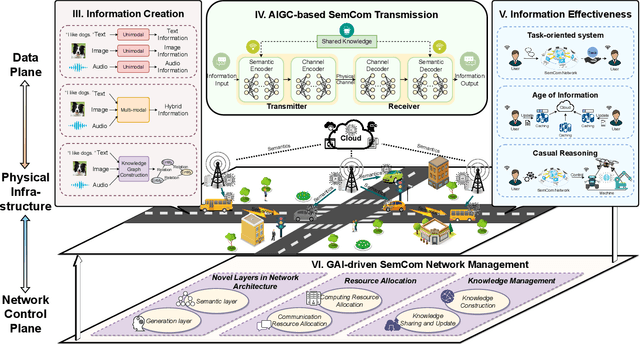
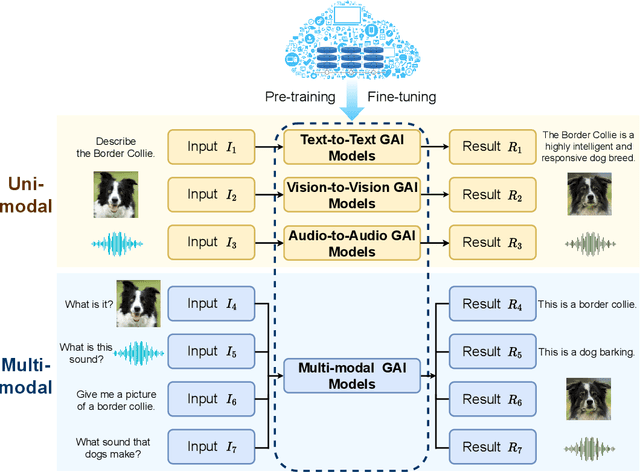
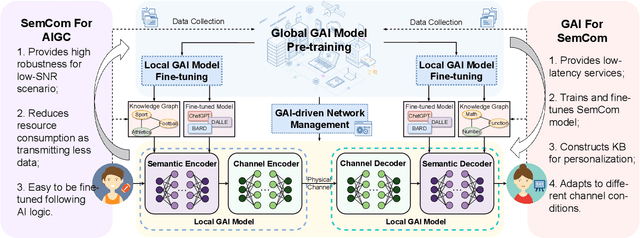
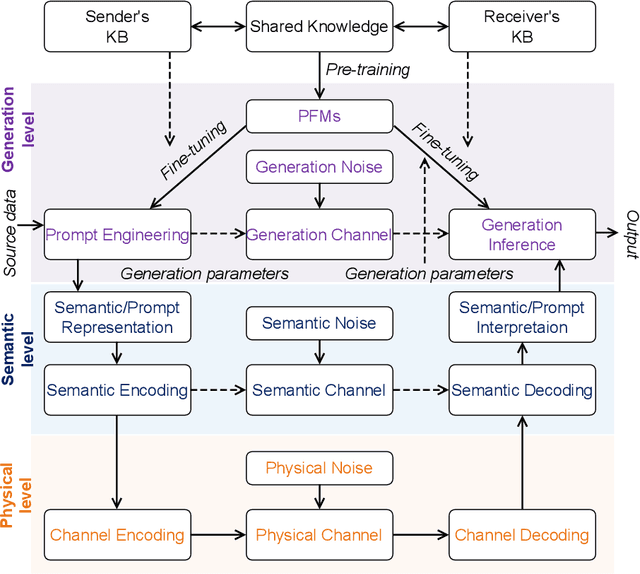
Abstract:Generative artificial intelligence (GAI) has emerged as a rapidly burgeoning field demonstrating significant potential in creating diverse contents intelligently and automatically. To support such artificial intelligence-generated content (AIGC) services, future communication systems should fulfill much more stringent requirements (including data rate, throughput, latency, etc.) with limited yet precious spectrum resources. To tackle this challenge, semantic communication (SemCom), dramatically reducing resource consumption via extracting and transmitting semantics, has been deemed as a revolutionary communication scheme. The advanced GAI algorithms facilitate SemCom on sophisticated intelligence for model training, knowledge base construction and channel adaption. Furthermore, GAI algorithms also play an important role in the management of SemCom networks. In this survey, we first overview the basics of GAI and SemCom as well as the synergies of the two technologies. Especially, the GAI-driven SemCom framework is presented, where many GAI models for information creation, SemCom-enabled information transmission and information effectiveness for AIGC are discussed separately. We then delve into the GAI-driven SemCom network management involving with novel management layers, knowledge management, and resource allocation. Finally, we envision several promising use cases, i.e., autonomous driving, smart city, and the Metaverse for a more comprehensive exploration.
WiserVR: Semantic Communication Enabled Wireless Virtual Reality Delivery
Nov 02, 2022

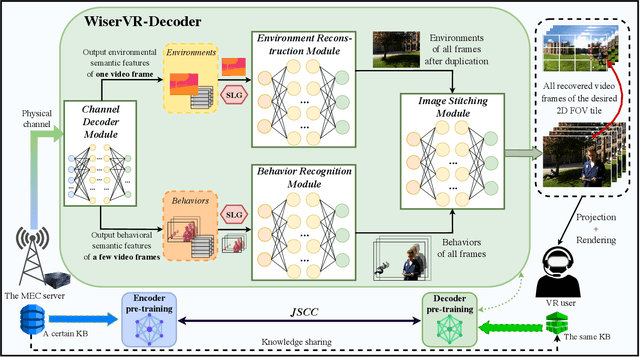

Abstract:Virtual reality (VR) over wireless is expected to be one of the killer applications in next-generation communication networks. Nevertheless, the huge data volume along with stringent requirements on latency and reliability under limited bandwidth resources makes untethered wireless VR delivery increasingly challenging. Such bottlenecks, therefore, motivate this work to seek the potential of using semantic communication, a new paradigm that promises to significantly ease the resource pressure, for efficient VR delivery. To this end, we propose a novel framework, namely WIreless SEmantic deliveRy for VR (WiserVR), for delivering consecutive 360{\deg} video frames to VR users. Specifically, deep learning-based multiple modules are well-devised for the transceiver in WiserVR to realize high-performance feature extraction and semantic recovery. Among them, we dedicatedly develop a concept of semantic location graph and leverage the joint-semantic-channel-coding method with knowledge sharing to not only substantially reduce communication latency, but also to guarantee adequate transmission reliability and resilience under various channel states. Moreover, implementation of WiserVR is presented, followed by corresponding initial simulations for performance evaluation compared with benchmarks. Finally, we discuss several open issues and offer feasible solutions to unlock the full potential of WiserVR.
 Add to Chrome
Add to Chrome Add to Firefox
Add to Firefox Add to Edge
Add to Edge